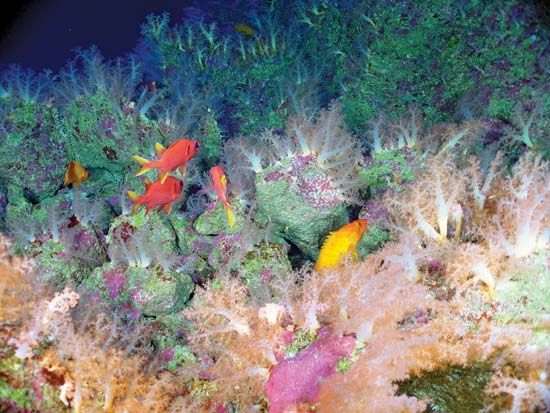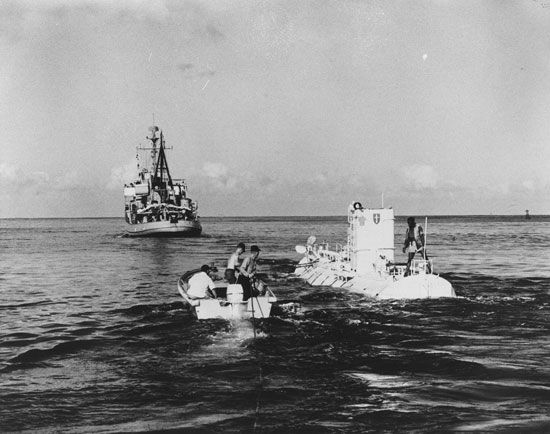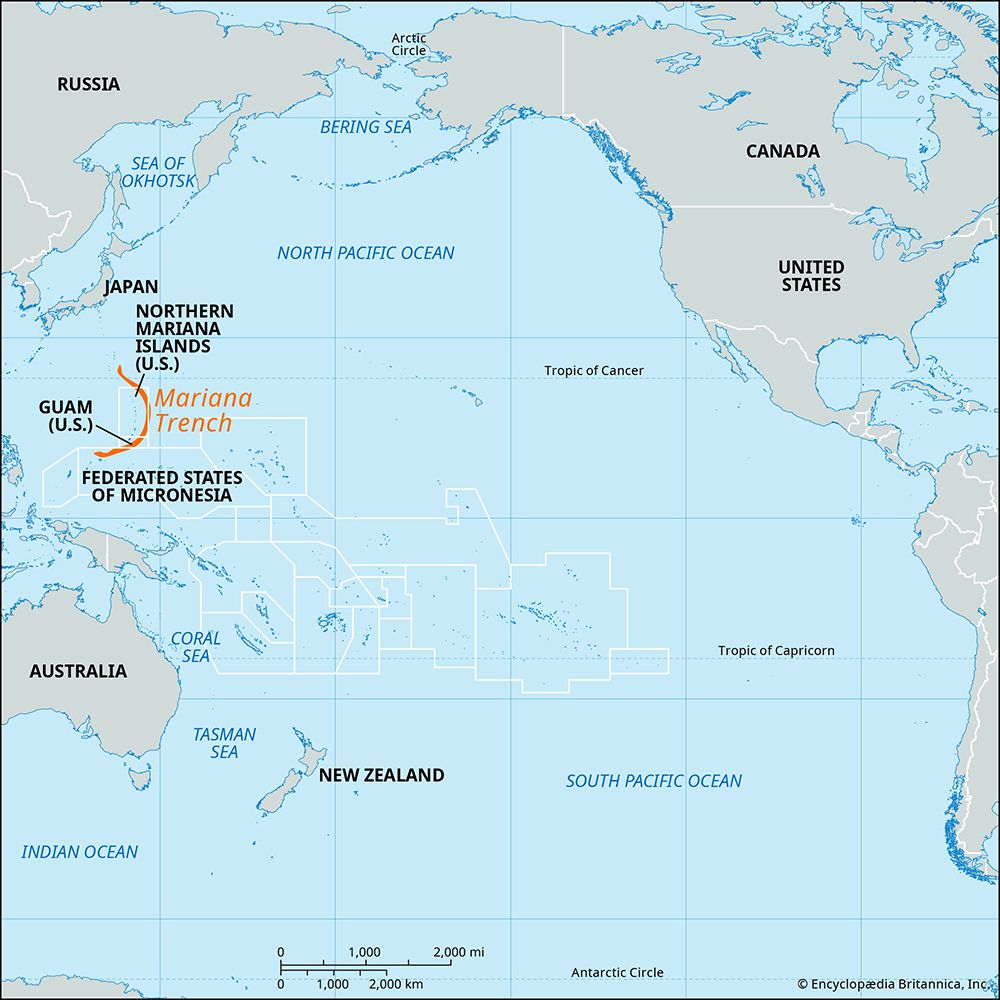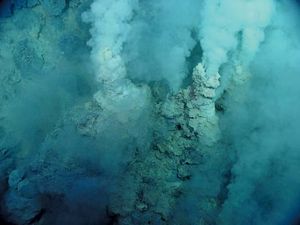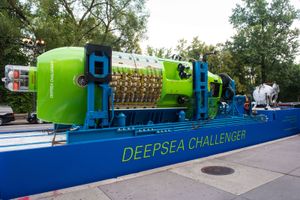Mariana Trench
Our editors will review what you’ve submitted and determine whether to revise the article.
- LiveScience - Mariana Trench: The Deepest Depths
- The Mariana Trench - Explore the Mariana Trench
- National Centers for Environmental Information - Planet Postcard: The Mariana Trench
- British Geological Survey - Uncovering secrets of the Mariana Trench
- BBC News - Mariana Trench: Deepest-ever sub dive finds plastic bag
- Also called:
- Marianas Trench
Mariana Trench, deep-sea trench in the floor of the western North Pacific Ocean, the deepest such trench known on Earth, located mostly east as well as south of the Mariana Islands. It is part of the western Pacific system of oceanic trenches coinciding with subduction zones—points where two adjacent tectonic plates collide, one being forced below the other. An arcing depression, the Mariana Trench stretches for more than 1,580 miles (2,540 km) with a mean width of 43 miles (69 km). The greatest depths are reached in Challenger Deep, a smaller steep-walled valley on the floor of the main trench southwest of Guam. The Mariana Trench, which is situated within the territories of the U.S. dependencies of the Northern Mariana Islands and Guam, was designated a U.S. national monument in 2009.
Measuring the greatest depths in the Mariana Trench is an exceedingly difficult task, given the technical challenges of delivering instrumentation to such a remote location and then obtaining accurate readings. The first attempt was made in 1875 during the Challenger Expedition (1872–76), when a sounding of 26,850 feet (8,184 metres) was obtained near the southern end of the trench. In 1899 Nero Deep (31,693 feet [9,660 metres]) was discovered southeast of Guam. That sounding was not exceeded until a 32,197-foot (9,813-metre) hole was found in the vicinity 30 years later. In 1957, during the International Geophysical Year, the Soviet research ship Vityaz sounded a new world record depth of 36,056 feet (10,990 metres) in Challenger Deep. That value was later increased to 36,201 feet (11,034 metres). Since then several measurements of the Challenger Deep have been made, using increasingly sophisticated electronic equipment. Notable among these is the depth of 35,840 feet (10,924 metres) reported by a Japanese expedition in 1984 and one of 36,070 feet (10,994 metres) obtained by a U.S. research team in 2011. In addition, another deep hole—originally called HMRG Deep (for Hawaii Mapping Research Group, the discoverers of the location) and later renamed Sirena Deep—is situated south of Guam and east of Challenger Deep. First encountered in 1997, its depth has been reported variously as 34,911 and 35,463 feet (10,641 and 10,809 metres).
The first descent to the bottom of the Mariana Trench took place on January 23, 1960. The French-built U.S. Navy-operated bathyscaphe Trieste—with Swiss ocean engineer Jacques Piccard (who helped his father, Auguste Piccard, design the bathyscaphe) and U.S. naval officer Don Walsh aboard—made a record dive to 35,814 feet (10,916 metres) in Challenger Deep. The next person to descend into that location did so more than 50 years after Piccard and Walsh. On March 26, 2012, Canadian filmmaker James Cameron piloted the submersible Deepsea Challenger (which he had helped design) to 35,756 feet (10,898 metres), in the process establishing a new world record depth for a solo descent.



